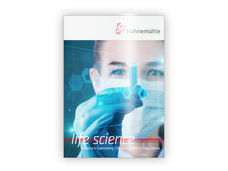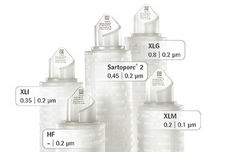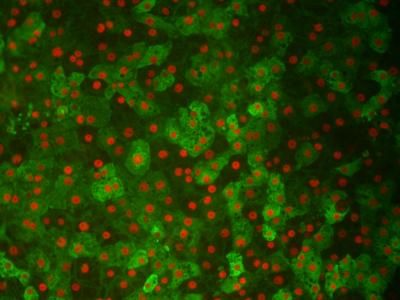First prion reduction product presented at the European Plasma Fractionation Association Conference
Pathogen Removal and Diagnostic Technologies Inc. (PRDT), a joint venture of Prometic Life Sciences Inc (Canada and UK) and the American National Red Cross, presented the details of the first product designed to selectively reduce the infectivity of the Transmissible Spongiform Encephalopathy (TSE) agents responsible for the transmission of classical Creutzfeldt-Jakob disease (CJD) and variant forms of CJD (vCJD) - from plasma derived products at the 2nd European Plasma Fractionation Association (EPFA) Conference in Edinburgh, Scotland. This product is a world first.
The successfully developed product, a proprietary immobilised "ligand" molecule binds to abnormal prion proteins and prion infectivity and filters them out of plasma-derived protein solutions thereby greatly reducing any potential risk of TSE disease transmission from plasma-derived products.
The Product will be initially employed in industrial preparation of plasma and plasma products, adding an extra removal step to the bio processing procedure and providing an increased margin of safety from TSE infectivity to recipients of plasma-derived products and additional reassurance to recipients of their safety and integrity.
Development of a prion reduction device to filter donor blood supplies on site at blood transfusion centres is underway. This second product will assist blood transfusion services around the world in maintaining the safety of blood and blood products from exposures to TSEs from donors incubating these diseases.
Dr R. Rohwer, Director of Molecular Neurovirology, VA Medical Research Service, University of Maryland, who presented data on the product at the Edinburgh conference said: "In tests, PRDT's top ligands have proved remarkable in their ability to reduce abnormal prion protein levels in blood and highly concentrated plasma protein samples, even when the blood or protein concentrates were artificially contaminated with high concentrations of the infectious agent. Our expectation is that wide application of this technology would greatly reduce the risk from TSE contamination of plasma derived proteins used in biopharmaceutical products and ultimately in blood and blood products like red blood cell concentrates."
Most read news
Other news from the department business & finance
These products might interest you

Cell culture filtration solutions by Cytiva
Cell culture filtration products
High-performance sterile filtration for media, protein purification, and cell culture

Hahnemühle LifeScience Catalogue Industry & Laboratory by Hahnemühle
Wide variety of Filter Papers for all Laboratory and Industrial Applications
Filtration Solutions in the Life Sciences, Chemical and Pharmaceutical Sectors

Sartopore®2 by Sartorius
Effective mycoplasma removal and sterilisation
Lowest filtration costs and maximum safety for your processes

Sartopore® Platinum by Sartorius
Efficient filtration with minimal protein adsorption
Reduces rinsing volume by 95 % and offers 1 m² filtration area per 10"

Get the life science industry in your inbox
By submitting this form you agree that LUMITOS AG will send you the newsletter(s) selected above by email. Your data will not be passed on to third parties. Your data will be stored and processed in accordance with our data protection regulations. LUMITOS may contact you by email for the purpose of advertising or market and opinion surveys. You can revoke your consent at any time without giving reasons to LUMITOS AG, Ernst-Augustin-Str. 2, 12489 Berlin, Germany or by e-mail at revoke@lumitos.com with effect for the future. In addition, each email contains a link to unsubscribe from the corresponding newsletter.























































